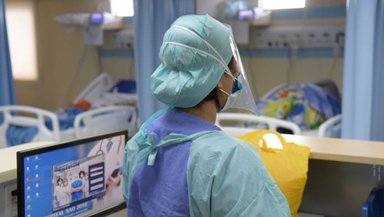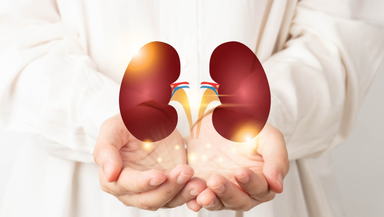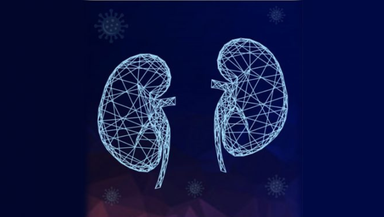Pancreatic Stones: Causes, Symptoms, and Treatment Options

Pancreatic Stones are formed due to the excessive deposition of calcium in the Pancreas. These stones obstruct the flow of digestive enzymes from the pancreas to the Small Intestine, which can lead to damage of the Organ and various health problems. The Pancreas plays a vital role in producing digestive enzymes, as well as releasing insulin and glucagon to regulate Blood Sugar levels. In addition to Pancreatic Stones, Gallbladder Stones can also block the path of enzymes through the common bile duct.
Pancreatic Stones are commonly found in individuals diagnosed with Pancreatitis, which is characterized by inflammation and irritation of the Pancreas. Pancreatitis can be acute or chronic, and the treatment approach may differ accordingly.
What causes Pancreatic Stones?
Excessive alcohol consumption, high levels of triglycerides in the blood, smoking, a family history of pancreatic stones, pancreatic cancer, infections in the pancreas, metabolic disorders such as diabetes, and high levels of calcium in the blood are all known causes. Understanding these risk factors can help individuals take necessary precautions and seek appropriate medical attention when needed.
Excessive alcohol consumption
High levels of triglycerides in the blood
Smoking
Family history of pancreatic stones
Pancreatic cancer
Infections in the pancreas
Metabolic disorders such as diabetes
High levels of calcium in the blood
How to recognise Pancreatic Stones?
Swollen and tender Abdomen leading to mild to severe Abdominal pain
Nausea
Vomiting
Fever
Treatment Options for Pancreatic Stones
For small Pancreatic Stones, the most common and effective treatment is a medical procedure called Endoscopic Retrograde Cholangiopancreatography (ERCP). This minimally invasive procedure has shown excellent results in removing small stones.
However, larger stones may require alternative treatments. In the past, surgery was the only option, but with advancements in medical technology, Lithotripsy has become another popular treatment method. Lithotripsy, commonly used for Kidney and Gallbladder Stone removal, involves using shockwaves to break down the stones into smaller pieces, allowing them to pass through the Pancreatic Duct more easily.
Know more about Endoscopic Retrograde Cholangiopancreatography (ERCP):
ERCP, or Endoscopic Retrograde Cholangiopancreatography, is a medical procedure used by doctors to diagnose and treat problems related to the Bile and Pancreatic Ducts. It is typically performed when there is a narrowing or blockage in these ducts due to various conditions such as Gllstones, infection, Pancreatitis (acute or chronic), trauma or surgical complications, Pancreatic Pseudocysts, or tumors/cancers of the Bile Ducts or Pancreas.
However, for diagnostic purposes alone, doctors may opt for noninvasive tests like magnetic resonance cholangiopancreatography (MRCP), which is safer and can also provide information about bile and pancreatic duct problems without physically entering the body.
What to expect after ERCP?
Before undergoing ERCP, it is essential to communicate with your doctor regarding any allergies, medical conditions, and medications you are taking. Certain medications that affect blood clotting or interact with sedatives may need to be temporarily stopped before the procedure. Sedatives are administered during ERCP to help the patient relax and stay comfortable.
If you are pregnant, it is important to inform your doctor, as adjustments can be made to protect the fetus from x-rays. ERCP is generally considered safe during pregnancy.
Pre and Post Operative Care:
On the day of the procedure, an IV needle will be placed in your arm to provide sedation. You may also receive a liquid anesthetic to gargle or have anesthetic sprayed on the back of your throat to numb the area and prevent gagging. The procedure is typically performed by a doctor with specialized training in ERCP at a hospital or outpatient center.
You will lie on an examination table while the doctor inserts an endoscope—a thin, flexible tube with a camera—through your mouth, esophagus, stomach, and into the duodenum. The endoscope helps visualize the upper gastrointestinal tract, and air may be pumped in to improve visibility.
During ERCP, the doctor locates the opening where the bile and pancreatic ducts empty into the duodenum and inserts a catheter through the endoscope into the ducts. A special dye, known as contrast medium, is injected through the catheter to make the ducts more visible on x-rays. Fluoroscopy, a type of x-ray imaging, is then used to examine the ducts and identify narrowed areas or blockages. The doctor may also use various tools passed through the endoscope to open blocked or narrowed ducts, remove or break up stones, perform biopsies, remove tumors, or insert stents to keep narrowed ducts open.
After the procedure, you will typically stay at the hospital or outpatient center for 1 to 2 hours to allow the sedation or anesthesia to wear off. In some cases, an overnight stay may be required. You may experience bloating or nausea temporarily and have a sore throat for 1 to 2 days. Once your swallowing returns to normal, you can resume a normal diet. Resting at home for the remainder of the day is recommended.
It is crucial to follow any post-procedure instructions provided by your healthcare team for proper care and recovery. If you have any concerns or questions, consult with your doctor or healthcare professional.
It is important to recognise the symptoms of Pancreatic Stones and seek prompt diagnosis and treatment. If left untreated, pancreatic stones can lead to conditions such as acute and chronic pancreatitis. The removal of pancreatic stones has become easier with modern technologies. pancreatic stones are formed due to excessive calcium deposition in the pancreas, leading to obstruction of the flow of digestive enzymes. They often occur in individuals with pancreatitis and can cause various health problems if left untreated. Recognizing the symptoms, understanding the risk factors, and seeking appropriate medical attention are essential for early diagnosis and effective treatment. With advancements in medical technology, procedures like ERCP and lithotripsy offer minimally invasive options for removing pancreatic stones and restoring normal pancreatic function. If you suspect pancreatic stones or have concerns about your pancreatic health, consult with a healthcare professional for a proper evaluation and guidance.
Consult with a healthcare professional to discuss your symptoms, get an accurate diagnosis, and explore the available treatment options.
Dr Bhupathi Rajendra Prasad
Consultant – Surgical Gastroenterologist
Disclaimer: The views and opinions expressed in this article belong solely to the author and do not reflect the opinions or views of the organization.
Specialities
Clear allMeet the doctor

Dr Rajendra Prasad Bhupathi
Surgical Gastroenterology
MBBS, MS, FMAS, DNB (Surgical Gastro, NIMS)










